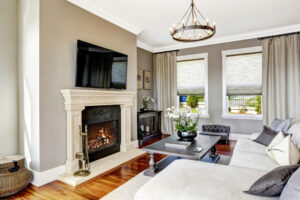Why do you need a smart home automation system design?
Unless you’re talking about production-homes, condos or apartments, smart home automation systems are custom built to fit your home and lifestyle. You wouldn’t build your home without a set of blueprints, so why would you think it’s okay to build your home automation system with a plan?
While you may find this hard to believe, all these black boxes and widgets used to bring systems to life are not designed by the manufacturers to work together. Much like building a car, it’s up to the system engineers and designers to understand what parts work best together to deliver a collective solution.
Your system designer and engineers will learn about you and your family’s needs, then based on that information, will assemble a complete solution that can be guaranteed to perform and deliver the results promised (at least in the case of StereoTypes).
From Washington DC to Ft. Lauderdale… Richmond to Naples… New York City to Miami, the number of lighting control and smart home automation systems that StereoTypes repairs or completes is significant. While these projects are in various stages of completion, there is usually one commonality_ no system design.
While there are a number of great reasons to have a system design, we’re going to discuss the top 3.
First and foremost, without a system design, you really have no idea what your supposed to get… certainly not enough information to win in court should things go awry.
Secondly, the installation team often has a difficult delivering on what was promised when all they have to go on the salesperson’s recollection of what was promised.
Third, post installation service and support. To be clear, for some of us, delivering a project without a system design is possible… and yes, can sometimes be less expensive. Problem comes in when the systems need servicing. Without a system design, anyone servicing the system (even the original installer) will spend a lot of time getting familiar with the system and reverse-engineering it before any service can be performed.
Having this documentation ensures everyone is on the same page and those who should be, are held accountable for the delivering to a specification. It leaves nothing to chance or memory. If someone believes something is missing as promised, simply flipping through the home automation system design should clear up any such questions.
To circumvent the risks, spend the money and have a real home automation system design created for your project (for more info on what a system design should include, see our post called, “Home Automation Risk Management – Part 2”).









